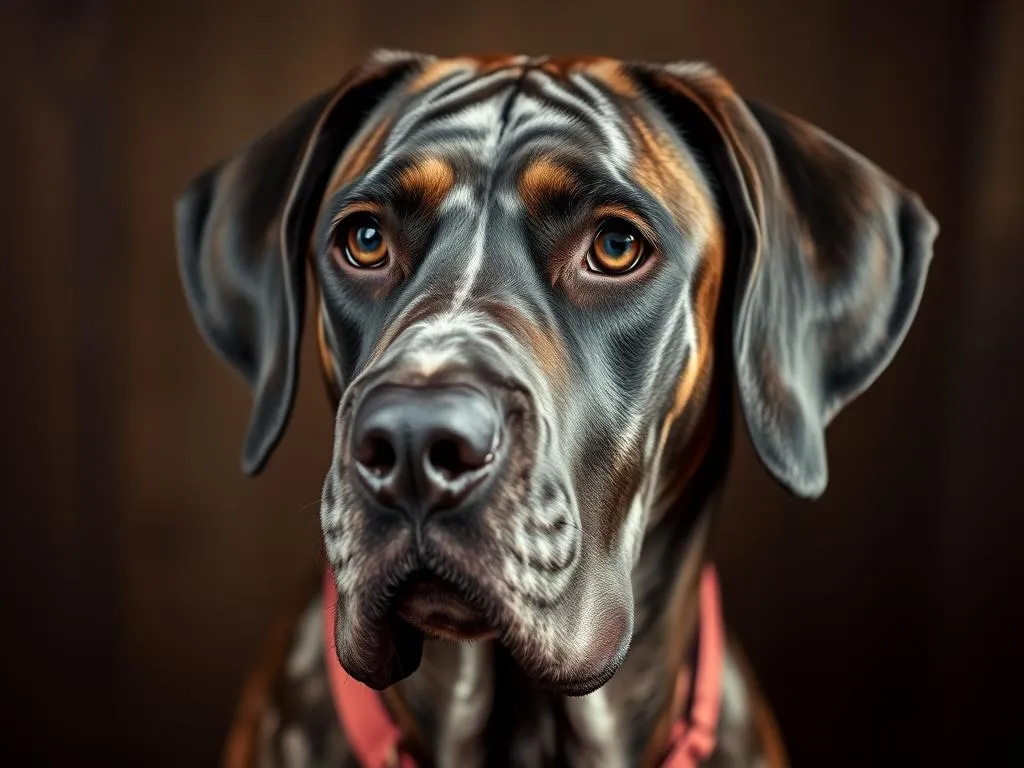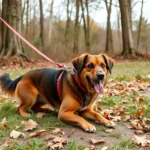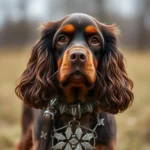
Introduction
The Great Dane, often referred to as the “gentle giant,” is a breed that captures the hearts of many dog lovers with its majestic size and friendly disposition. As families consider adding a furry member to their household, the importance of choosing the right dog based on family dynamics cannot be overstated. This article aims to explore whether a Great Dane is a good family dog by examining various aspects of the breed, including its history, temperament, care, and integration into family life. We will structure our discussion in a way that provides a clear understanding of what it means to own a Great Dane in a family setting.
Understanding the Great Dane
Breed History
The Great Dane has a rich history that dates back thousands of years. Originally bred in Germany for hunting large game, these dogs were valued for their strength and agility. Over time, they evolved into the breed we know today, characterized by their impressive size and gentle nature. The breed has undergone significant development through the years, transitioning from a fierce hunter to a beloved family companion.
Physical Characteristics
One of the most distinguishing features of the Great Dane is its size. Males typically weigh between 140-175 pounds, while females range from 110-145 pounds. Their height can reach up to 34 inches at the shoulder, making them one of the tallest dog breeds in the world.
In terms of coat, Great Danes can have a variety of colors and patterns, including fawn, brindle, blue, black, harlequin, and more. Their short, smooth coat is relatively easy to maintain, which is a plus for busy families.
Temperament and Personality Traits
Great Danes are often described as affectionate, loyal, and gentle. Their demeanor is typically calm, making them excellent companions for families. Known as “gentle giants,” they possess a natural protective instinct, which makes them great watchdogs. Their interaction with children is generally positive, as they are playful and tolerant, often forming strong bonds with kids. Moreover, they can coexist with other pets, provided they are properly socialized.
Great Danes and Family Life
Compatibility with Children
When considering if a Great Dane is a good family dog, one of the most critical factors is their compatibility with children. Great Danes are known for their protective instincts. They are naturally watchful and can act as guardians for young ones, often sensing when something is amiss. Their playful nature allows them to engage in various activities with children, whether it’s playing fetch or simply lounging around the house.
However, it’s essential to supervise interactions between large dogs and small children to avoid accidental injuries due to their size and energy levels.
Interaction with Other Pets
Great Danes generally get along well with other pets if introduced correctly from a young age. Their socialization needs are significant; they thrive in environments where they can interact with various animals. However, caution is advised when they are around smaller pets, as their size and playfulness could unintentionally harm them. Socializing the Great Dane with smaller pets early on can help mitigate any issues.
Space and Living Requirements
Great Danes require ample space to move around comfortably. They thrive best in homes with a yard but can adapt to apartment living if they receive adequate exercise. Their exercise needs are substantial; daily walks and playtime are crucial to keep them physically and mentally stimulated. Families must be ready to commit to a consistent routine to ensure their Great Dane remains healthy and happy.
Care and Maintenance of Great Danes
Feeding and Nutrition
Feeding a Great Dane requires special attention due to their size and specific dietary needs. They are prone to certain health issues, such as bloat and hip dysplasia, which can be exacerbated by improper nutrition. It’s essential to provide high-quality dog food that meets their energy and nutritional requirements.
Feeding schedules should be regular, with adult Great Danes typically fed twice a day to prevent bloat. Owners should consult their veterinarian for specific recommendations regarding diet and portion sizes.
Grooming Requirements
Grooming a Great Dane is relatively straightforward due to their short coat. Regular brushing is recommended to remove loose hair and minimize shedding, which can be significant during seasonal changes. Bathing should be done as needed, usually every few months, or if the dog becomes particularly dirty.
Health Considerations
Like all breeds, Great Danes come with specific health considerations. Common health issues include bloat, hip dysplasia, and heart problems. Regular veterinary check-ups are crucial for early detection and management of these health concerns. Additionally, responsible breeding practices play a significant role in minimizing genetic health issues, so choosing a reputable breeder is essential.
Training and Socialization
Basic Training Techniques
Training a Great Dane is a vital aspect of ensuring they integrate well into family life. Early training is essential, as it sets the foundation for good behavior. Positive reinforcement techniques work best for this breed, as they respond well to praise and treats. Basic commands such as sit, stay, and come should be introduced early on, helping establish boundaries and expectations.
Socialization with Family and Strangers
Socialization is critical for Great Danes. Exposing them to various environments, people, and other animals will help them develop into well-rounded pets. This exposure should begin as a puppy and continue throughout their life. Tips for successful socialization include enrolling them in puppy classes, inviting friends over, and taking them to dog-friendly parks.
Pros and Cons of Having a Great Dane as a Family Dog
Advantages
The advantages of owning a Great Dane as a family dog are plentiful. They are incredibly loyal and affectionate, often forming deep bonds with family members. Their protective instincts provide a sense of security, while their playful nature makes them great companions for children.
Moreover, their relatively low grooming needs can be appealing for busy families, and their generally calm demeanor makes them suitable for indoor living.
Disadvantages
On the flip side, there are some disadvantages to consider. Great Danes require a significant amount of space due to their size, which can be a drawback for families living in smaller homes or apartments. Additionally, health concerns associated with large breeds can lead to high veterinary costs, and their shorter lifespan compared to smaller breeds can be emotionally challenging for families.
Testimonials from Great Dane Owners
Positive Experiences
Many Great Dane owners share heartwarming stories about their experiences with the breed. For instance, families often describe their Great Danes as “the best babysitters,” noting how their dogs protect and play with their children. The affectionate nature of these dogs often makes them a central part of family activities, creating lasting memories.
Challenges Faced
While there are many positive experiences, some owners report challenges. Common issues include managing their massive size, which can lead to accidental bumps and knocks in the home. Additionally, owners may struggle with the health issues that can come with the breed. These challenges require commitment and awareness, but many owners feel the love and companionship they receive outweigh any difficulties.
Conclusion
In conclusion, the Great Dane can be an excellent family dog, provided that families are prepared to meet their needs. With their gentle disposition, protective instincts, and ability to bond with children, they can bring immense joy to any household. However, prospective owners should consider their living situation, commitment to exercise, and potential health issues before making a decision. Ultimately, understanding your family’s dynamics and lifestyle is crucial in determining if a Great Dane is the right fit for you.
FAQs
Are Great Danes good with toddlers?
Yes, Great Danes are generally good with toddlers. Their gentle and tolerant nature allows them to interact well with young children, but supervision is always recommended.
How much exercise does a Great Dane need?
A Great Dane typically requires at least 1-2 hours of exercise daily, which can include walks, playtime, and mental stimulation.
Do Great Danes shed a lot?
Great Danes do shed, especially during seasonal changes. Regular brushing can help manage shedding and keep their coat healthy.
What are the best training tips for Great Danes?
Positive reinforcement techniques, early socialization, and consistency are key when training a Great Dane. Start with basic commands and gradually introduce more complex training as they grow.
Through the exploration of various aspects of the Great Dane breed, we hope to provide valuable insights for families considering this remarkable dog as a companion. Whether you’re drawn to their size, temperament, or affectionate nature, the journey of having a Great Dane can be rewarding and fulfilling.









